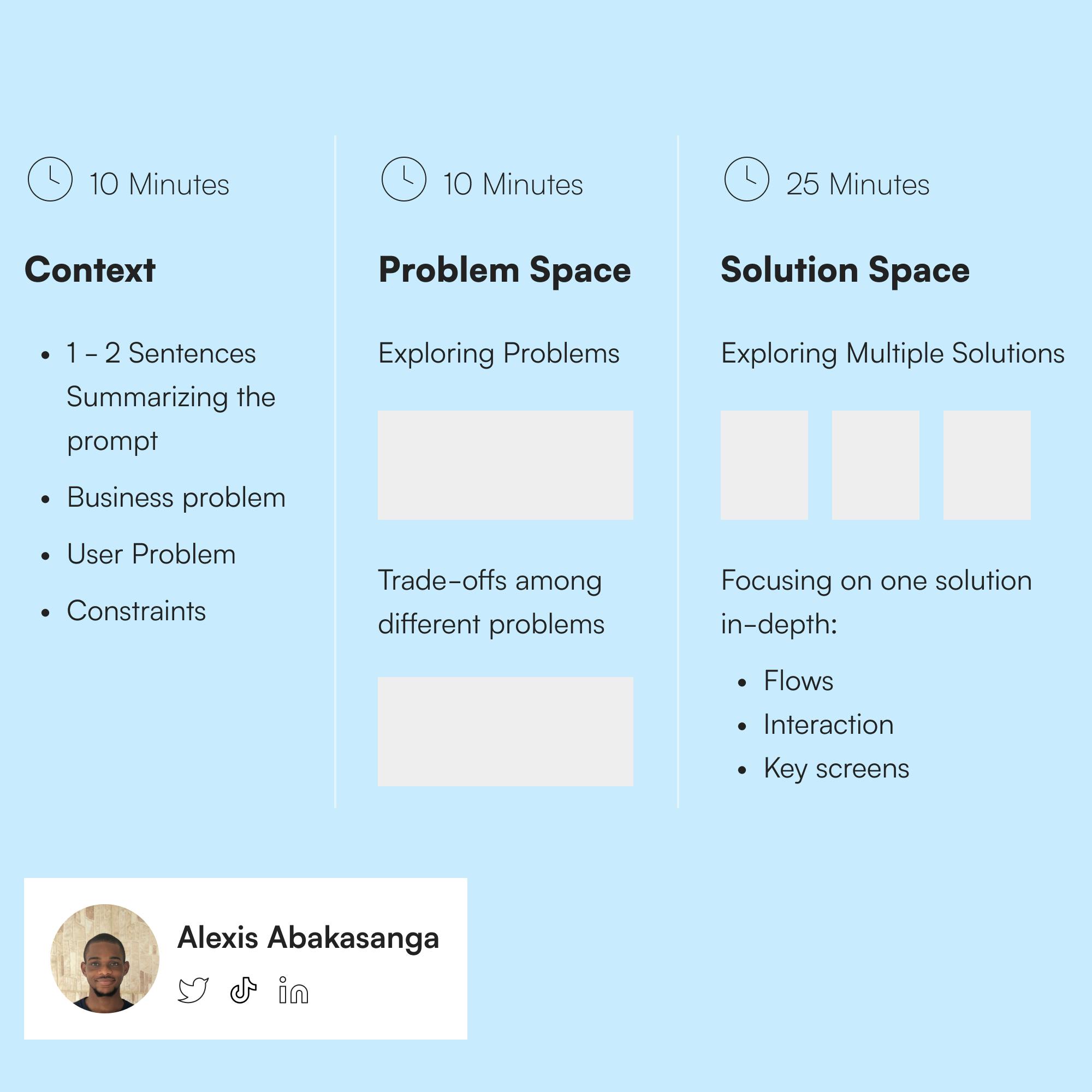Day 12: Approaching Whiteboard Challenges
Meaningful focus > Diffused diligence
Whiteboard challenges are not about how many ideas you come up with; they are about how you approach a problem and work with others as a designer.
Nothing comes close in demonstrating how a UX designer thinks and behaves than a whiteboard challenge - Zhenshuo Fang
As a designer, I should ask questions to get clarity on a goal; I have to focus on the users and their contexts. I have to make valid assumptions, ask the right questions, go beyond UI and think holistically about a given scenario, understand basic design principles and patterns, and be self-aware to spot weaknesses and improvements in a given space or solution.
5-Step Approach to Whiteboard Challenges
Asking questions to specify the challenge.
Asking about the users and their context.
Writing down the main steps of the story
Draw a few critical screens.
Summarize the story, and talk about alternatives, improvements, or other use cases
Evaluation Criteria of a Whiteboard Challenge
Problem definition.
Solution-finding and idea generation
Interaction design knowledge
Collaboration.
Design is about prioritizing and making compromises, and there is no single correct solution to any design problem.

Key takeaways/learnings
I look forward to taking on a whiteboard challenge when I am on course to landing my first entry-level role. It sounds exciting. I will use prompts to improve and learn more about tackling these challenges.
References
"My Uber Whiteboarding UX Challenge // How to... YouTube." https://www.youtube.com/watch?v=8MQmYa_zq0g&vl=es.
"5 Steps to Master the Whiteboard Design Challenge | by Zhenshuo Fang" 9 Mar. 2016, https://uxdesign.cc/5-steps-to-master-a-whiteboard-design-challenge-6ecbe9ec38b7.
"Crushing the product design whiteboard challenge—UX Collective." 14 Aug. 2019, https://uxdesign.cc/crushing-the-product-design-whiteboard-challenge-c0f5a50b4c0d.
Thank you for reading my article, have a good one 👋🏽